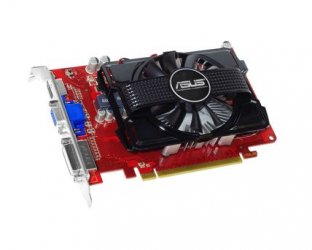Bitcoin Radeon 6670
Review updated to reflect actual street pricing
The Radeon HD 6670 sits at the upper end of AMD's budget range, above the HD 6450 but below the HD 6790. It replaces the HD 5670 from last year, but has some significant upgrades. It has 1GB rather than 512MB of GDDR5 RAM, runs at 800MHz not 775MHz and has 480 instead of 400 stream processors.
The HD 6670 is, at 168mm, barely longer than a PCI Express slot, so you shouldn't have any trouble fitting it in your case. It also doesn’t need a PCI Express power connector, so even a PC with the wimpiest power supply will be able to handle the upgrade. On our reference card there are DVI and VGA ports, but the DisplayPort won't be much use to anyone - thankfully manufacturers' cards will also feature HDMI - such as this Asus example, below.

The HD 6670's improved specifications make it far quicker in our benchmarks than the HD 5670 it replaces. Call of Duty 4 at 1, 680x1, 050 and 4x anti-aliasing ran at 47.2fps, compared to 41.8fps for the HD 5670. Call of Duty 4 was still a smooth 42.5fps once we raised the resolution to 1, 920x1, 080.
At our standard settings of 1, 680x1, 050, High detail and 4x anti-aliasing, Crysis was fairly jerky with 25.1fps, but lowering the resolution to 1, 440x900 gave us a playable 31.3fps. The HD 5670 was far behind, with 16.9fps at 1, 680x1, 050 and 23.9fps at 1, 440x900.
The HD 6670 is capable of playing modern games at reasonable resolutions, and feels much more like a gamer's card than the far slower HD 6450. It's also a significant improvement over the HD 5670 it replaces. If you want to be sure of smooth gaming on a 24-inch monitor for the foreseeable future you should find the extra £30 for the HD 6790, but if you're gaming on a tight budget this is the graphics card to have.






